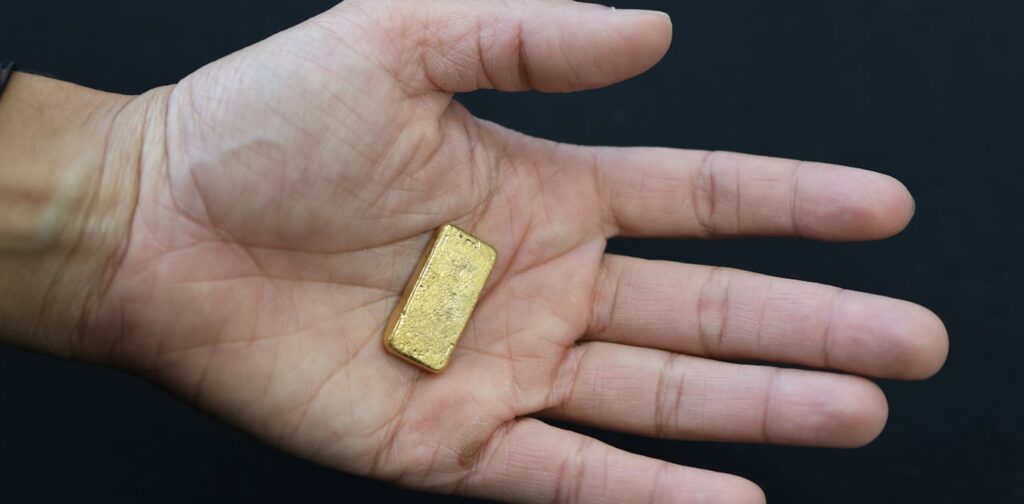
In 2022, the world generated an estimated 62 million tonnes of electronic waste, a staggering amount enough to fill over 1.5 million garbage trucks. This figure marks an 82% increase from 2010 and is projected to rise to 82 million tonnes by 2030. Among this e-waste are discarded laptops and smartphones, which contain valuable materials like gold. However, less than a quarter of this waste is properly collected and recycled. A groundbreaking technique developed by a team of chemists offers a sustainable and safe method to extract gold from e-waste, potentially revolutionizing the recycling process.
The new gold-extraction technique, detailed in a paper published in Nature Sustainability, promises to make small-scale gold mining less harmful to both people and the environment. This development comes at a time when global demand for gold is soaring, driven by its essential role in industries such as electronics, chemical manufacturing, and aerospace.
Environmental Challenges of Gold Mining
Gold has been a cornerstone of human civilization, serving as currency and an artistic medium for centuries. Yet, the environmental toll of gold mining is significant. Traditional mining practices involve deforestation and the use of toxic chemicals like cyanide, which, although degradable, pose risks to wildlife and the environment. Tailings dams storing these toxic byproducts are another environmental hazard.
In small-scale and artisanal mining, mercury is extensively used to extract gold. This practice forms a dense amalgam with gold, which is then heated to vaporize the mercury. This method is the largest source of mercury pollution globally, posing dangers to miners and the environment. The need for safer mining methods is pressing.
Introducing a Safer Alternative
An interdisciplinary team of scientists and engineers has developed a new technique to extract gold from both ore and e-waste. The goal was to offer a safer alternative to mercury and cyanide, reducing the health and environmental impacts of gold mining. While previous methods exist, they often fall short in terms of rate, yield, scale, and cost, and frequently overlook the entire gold recovery process, including recycling and waste management.
In contrast, the new approach emphasizes sustainability throughout the gold extraction, recovery, and refining process. The team utilized trichloroisocyanuric acid, a chemical commonly used in water sanitation and pool chlorination. When activated with salt water, it reacts with gold, converting it into a water-soluble form.
Innovative Polymer Sorbent
To recover gold from the solution, the team invented a sulphur-rich polymer sorbent. This polymer, derived from elemental sulphur—a low-cost and abundant resource—can selectively bind and remove gold from the solution, even amidst other metals. The petroleum industry generates more sulphur than it can use, making this polymer synthesis a novel application for an underutilized resource.
The process was demonstrated on ore, obsolete computer circuit boards, and scientific waste. Importantly, methods were developed to regenerate and recycle both the leaching chemical and the polymer sorbent, as well as purify and recycle the water used. The polymer sorbent can be “un-made” after binding gold, converting back to its original monomer, ready to be reused.
Challenges and Future Prospects
Looking ahead, the team plans to collaborate with industry, government, and non-profit organizations to test their method in small-scale mining operations. The long-term aim is to provide a robust, safe method for gold extraction that eliminates the need for toxic chemicals like cyanide and mercury. However, challenges remain, including scaling up polymer sorbent production and ensuring the process is competitive with traditional mining methods.
Preliminary results are promising, yet there is a long road ahead before these new techniques can replace existing methods. The broader motivation is to support the livelihoods of millions of artisanal and small-scale miners who rely on mercury for gold recovery. These miners often work in remote, rural areas with limited economic opportunities. The goal is to provide safer alternatives while supporting their economic well-being.
Impacts on Urban Mining and E-Waste Recycling
The rise of “urban mining” and e-waste recycling stands to benefit from safer, simpler methods for precious metal recovery. Success in extracting gold from e-waste could reduce the need for primary mining, thereby lessening its environmental impact.
The journey towards a sustainable and safe method for gold extraction is complex, but the potential benefits for both the environment and the economy are substantial. As the world grapples with increasing e-waste, innovations like this offer a glimmer of hope for a more sustainable future.







